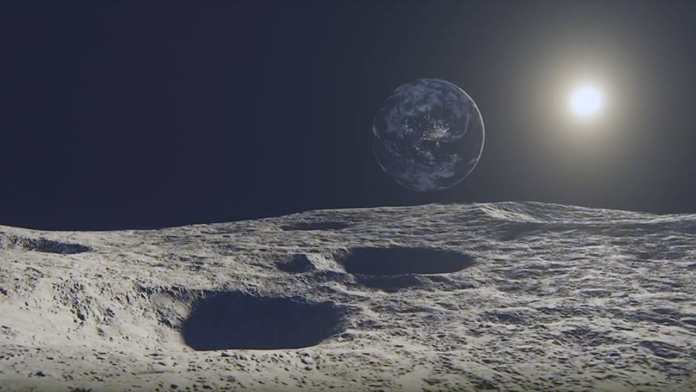In a groundbreaking study about the moon, researchers from the French National Centre for Scientific Research, led by astronomer Arthur Briaud, have unveiled the secrets of the Moon’s inner core. Their findings, published in the prestigious journal Nature, confirm that the Moon’s inner core is solid, with an iron-like density. This discovery not only deepens our understanding of the Moon’s internal structure but also sheds light on its magnetic evolution.
The Research Approach
To unravel the mysteries of the Moon’s inner core, Briaud and his team employed advanced seismic data analysis. By observing how acoustic waves from lunar quakes interact with the Moon’s internal materials, the researchers meticulously mapped its interior. These acoustic patterns, recorded during various space missions and laser-ranging experiments, were compared with models of different core compositions. This precise methodology enabled the team to conclude that the Moon’s core has striking similarities to Earth’s.

How The Moon’s Core Mirrors Earth’s Structure?
One of the most intriguing aspects of this study is the striking resemblance between the Moon’s core structure and Earth’s. The research revealed that the Moon’s core consists of a fluid outer layer enveloping a solid inner core, mirroring Earth’s geodynamical layers.
- Outer Core: The radius of the Moon’s fluid outer core measures approximately 362 km.
- Inner Core: The solid inner core has a radius of about 258 km, comprising roughly 15% of the Moon’s total radius.
- Density: The inner core’s density was calculated at 7,822 kg per cubic meter, which closely aligns with the properties of iron.
These findings enhance our understanding of the Moon’s geophysical properties, suggesting that it once had a magnetic field powered by core dynamo processes, akin to Earth’s.
Confirmation Of Previous Lunar Research
This latest discovery aligns with a 2011 study led by Renee Weber, a planetary scientist at NASA’s Marshall Space Flight Center. Weber’s research had similarly suggested the presence of a solid inner core with a radius of about 240 km and an approximate density of 8,000 kg per cubic meter. The consistency between the French team’s results and NASA’s earlier findings strengthens the argument for an Earth-like lunar core.
Briaud and his team’s work not only validates NASA’s findings but also enriches them by offering more refined measurements and advanced seismic mapping techniques.
Insights Into The Moon’s Magnetic Evolution
The confirmation of the Moon’s solid inner core offers valuable insights into the history of its magnetic field. Scientists believe that the Moon once had a dynamic and robust magnetic field, powered by movements within its fluid outer core. Over time, as the Moon cooled and its core processes slowed, this magnetic field dissipated.
The discovery of a solid inner core supports this theory, providing a clearer picture of how the Moon’s geodynamical and thermal evolution unfolded.
Bridging Past Theories With New Data
For decades, scientists have speculated about the Moon’s interior, with theories oscillating between completely solid and partially fluid cores. Earlier missions, such as the Apollo program, provided seismic data that hinted at a layered structure. However, limitations in technology and data resolution left room for speculation.
This study leverages advancements in seismic mapping and data interpretation to settle long-standing debates about the Moon’s core composition.
A Closer Look At The Moon’s Layers
The researchers’ seismic data revealed fascinating details about the Moon’s multi-layered interior:
- Mantle: Surrounding the core, the Moon’s mantle is composed of silicate materials. The seismic data confirmed its varying density and temperature gradients.
- Crust: The outermost layer of the Moon, composed of oxygen, silicon, magnesium, and other elements, acts as a protective shell.
Together, these layers paint a comprehensive picture of the Moon’s complex geological history.
Implications For Future Lunar Missions
The confirmation of the Moon’s solid core has far-reaching implications for upcoming lunar exploration missions. NASA’s Artemis program, which aims to return humans to the Moon, could use this data to better plan lunar landings and study subsurface conditions.
Additionally, understanding the Moon’s core structure can help scientists model the behavior of other celestial bodies with similar compositions, such as Mars or Mercury.

The Path Forward
While this discovery answers some of the most pressing questions about the Moon, it also opens new avenues for exploration. Future missions equipped with advanced seismometers could delve even deeper into the Moon’s subsurface layers, uncovering more secrets about its formation and evolution.
Arthur Briaud and his team’s work not only advances lunar science but also highlights the importance of international collaboration in unraveling the mysteries of our universe.

